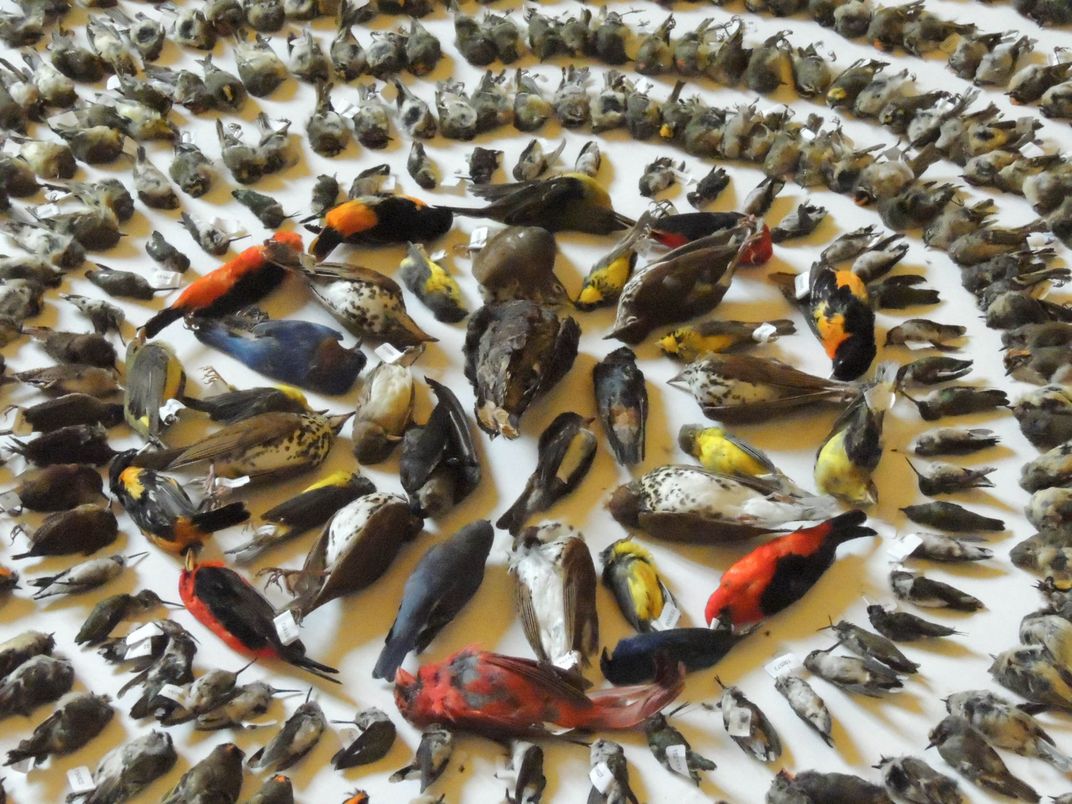This Pattern Is Made of 2,100 Dead Birds
It’s all part of a bid to raise awareness of the plight of birds that crash into city buildings
/https://tf-cmsv2-smithsonianmag-media.s3.amazonaws.com/filer/b4/52/b4525be0-17c7-4100-abcf-06c9e01cf49b/flap_2016_layout.jpg)
Toronto has a problem with fatal collisions—accidents that claim thousands of victims each year. But the collisions (and the victims) aren’t what you might think. They occur when birds slam into the city’s skyscrapers and office windows. To draw attention to these many needless deaths, a Canada group laid out over 2,100 dead birds on the floor of a Toronto museum.
The organization behind the beautifully sad installation Fatal Light Awareness Program, or FLAP, the world’s first group that’s dedicated to addressing the issue of birds that collide with buildings. The group gathers tips on injured or dead birds using a hotline and their website, and then they hit the streets of Toronto. Volunteers scour the region to both rescue migratory birds that have been injured when they slam into buildings and collect the dead ones.
Buildings present a serious threat for birds: Researchers estimate that in the United States alone, nearly a billion birds die each year when they hit human-made structures. Glass skyscrapers are particularly dangerous to migrating birds, who get confused by bright lights and can’t distinguish between glass and sky. So the group also works with corporate and residential owners and builders to create policies and guidelines that protect birds.
There are ways to reduce the number of collisions, writes Jane J. Lee for National Geographic. Birds are good at navigating around structures that contain visual “noise” that act as cues to steer clear. Ornithologists have helped develop bird-friendly glass with patterns that birds can see but people can’t, she writes. One such glass, Ornilux, has been available in the United States since 2010 and is in use at places like the Tracy Aviary in Salt Lake City and the Philadelphia Zoo.
This year, FLAP laid out over 2,100 birds from more than 90 species on the floor of the Royal Ontario Museum’s rotunda. It’s a ritual the organization repeats every year in the hopes of drawing attention to the plight of migratory birds that meet their ends in cities.
But the birds have not died in vain—not only is the display eerily beautiful, but they are later donated to the museum for research and education.

/https://tf-cmsv2-smithsonianmag-media.s3.amazonaws.com/accounts/headshot/erin.png)
/https://tf-cmsv2-smithsonianmag-media.s3.amazonaws.com/accounts/headshot/erin.png)